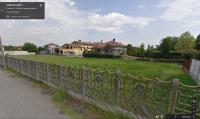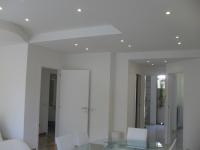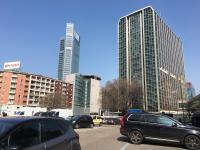Italy: The present trend of the Italian real estate market is favouring the development of alternative housing solutions deriving from renovations or conversions of disused spaces. Old industrial sheds, shops and garages on the ground floor, as well as attics have become very attractive for builders ...
Mansards and lofts: alternative housing solutions
Italy: The present trend of the Italian real estate market is favouring the development of alternative housing solutions deriving from renovations or conversions of disused spaces. Old industrial sheds, shops and garages on the ground floor, as well as attics have become very attractive for builders. Mansards allow increasing the habitable space in the upper story of a building and have a great decorative potential.
Mansards – also called French roofs – were invented in Italy but became popular in the XVII century thanks to François Mansart, a French architect of the Baroque period, who started to use it in his designs.
National and regional laws regulate the habitability of mansards and lofts, which are highly demanded by middle-class buyers. The demand for mansards and lofts has increased by 7% in big cities and the supply has risen by 25% in two years in Italy.
Prices are very interesting, as they allow saving money in comparison with the price for an apartment, even if it is advisable to check quality and usable area before purchasing a mansard or a loft. An apartment may be more suitable even if the value/square metre is lower.
Some lofts offer 150-sqm living areas that sometimes are arranged on two or even three levels and intermediate floors are not always comfortable. Furthermore, maintenance charges can rise considerably if the dwellings are not sufficiently ventilated or insulated. A mansard may suffer the heat during the summer and dampness during the winter. A loft may lack brightness.
Moreover, regional laws often limit intervention possibilities and oblige builders to make prices fall.
There are several types of lofts: sometimes they have been created through the conversion of former industrial and commercial spaces; sometimes, they derive from residential buildings that have been renovated in order to offer more modern and attractive places to live.
These solutions attract a segment of very demanding customers. Mandards are very much desired in Milan, as they are high, less noisy and less dark than lofts. Lofts in Milan represent 5% of the supply of new/renovated dwellings. They are demanded above all by singles or young couples. The recovery of attics is ruled by regional laws that are in force since 1996. The minimum height must be 1.7 metres. Lower spaces must be closed and used as warehouses or wardrobes.
In Rome, lofts are created with the conversion of old cattlesheds of garages. They are smaller but prices are very high.
The price for a loft in Florence – the chief town of Tuscany – is about 4000 euros/sqm metre, in line with the prices of traditional apartments.
Lofts are having considerable success in Genoa, where the supply of this kind of dwellings is expected to increase in the near future.
Related Insights
-
Mansards and lofts: alternative housing solutions
Real Estate Listings
For sale Other (Commercial), Italy, Milan, Sesto San Giovanni, Via Libero Biagi Sesto San Giovanni

For sale
Other (Commercial)
920 m²
For sale 5+ Bedrooms, Italy, Milan, Milan, via Oltrocchi

For sale
5+ Bedrooms
151 m²
For sale Development Property, Italy, Milan, Bernate Ticino, Vicolo San Carlo

For sale
Development Property
2100 m²
For sale Business, Italy, Milan, Milan, Via Rembrandt

For sale
Business
35 m²
For sale Terraced House, Italy, Milan, Settala, Via Pergolesi

For sale
Terraced House
260 m²
For sale 4 Bedrooms, Italy, Milan, Milan, quartiere dei Giornalisti - Mi

For sale
4 Bedrooms
130 m²
For sale 4 Bedrooms, Italy, Milan, San Colombano al Lambro, Via Steffenini 93

For sale
4 Bedrooms
104 m²
For sale Hotel, Italy, Milan, Milan, milano via stresa

For sale
Hotel
2100 m²
For sale 3 Bedrooms, Italy, Milan, Milan, valsesia 76

For sale
3 Bedrooms
120 m²

